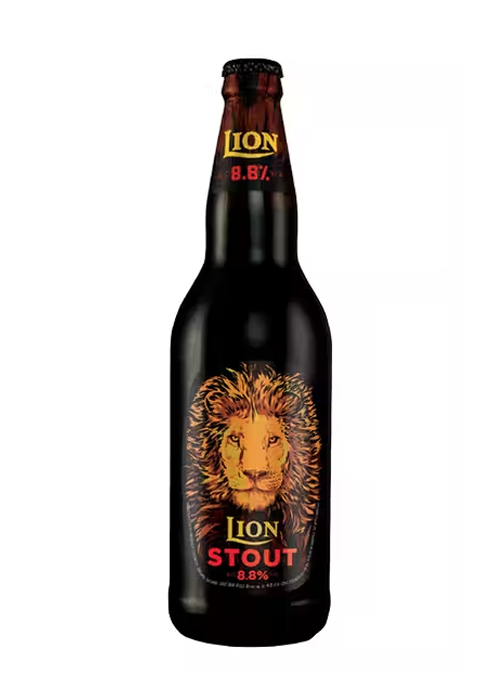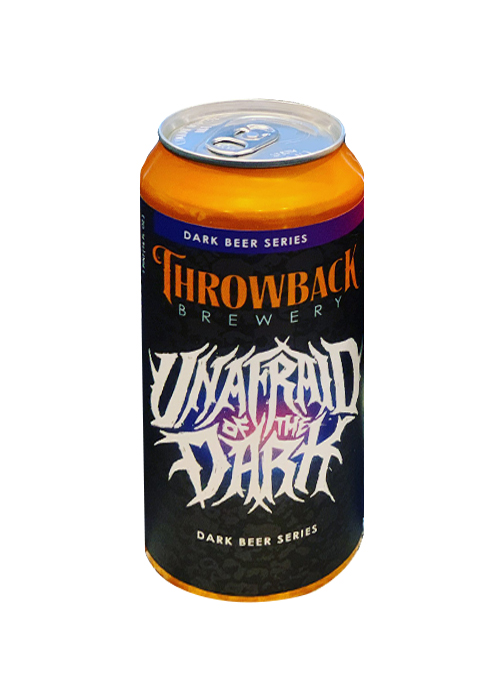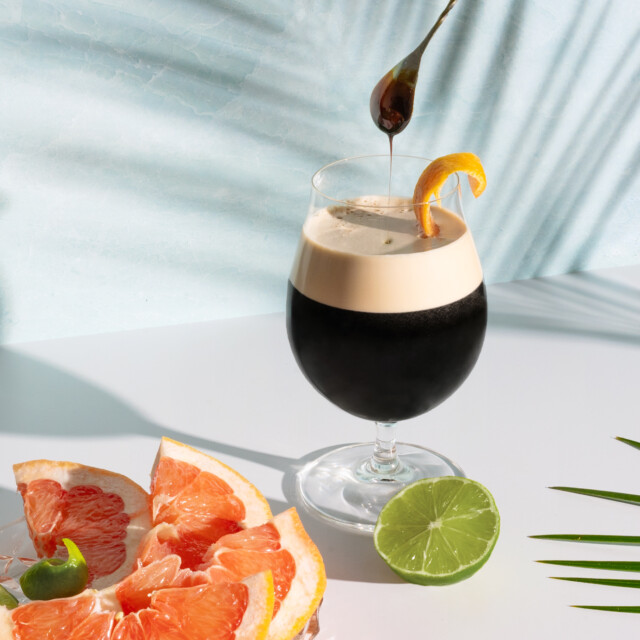While die-hard stout devotees may sound off in Instagram comments, #StoutSeason is synonymous with winter. Letting the weather dictate what we drink isn’t wrong, per se, but the beauty of beer’s many styles and current brewing and refrigeration technology is one can drink a saison in December or a stout in July if they so choose.
Whether your beer preferences change with the seasons or you scoff at the suggestion of the calendar telling you what to do, chances are, unless you are indeed a 365-day-a-year stout stan, you may well be surprised to learn about a particular stout substyle especially popular in year-round warm regions. The tropical stout doesn’t appear much in the United States, but there are enough fans in the American beer scene to reason that, with a little evangelizing, we could start seeing more examples and even — gasp — get accustomed to enjoying these dark beers in summer months.
The Tropical Stout’s Origins Are Not Un-IPA-Like
In 18th-century England, brewers were sending their beers on long ship journeys to reach expats and soldiers in English colonies. The oversimplified IPA origin story goes that brewers needed their pale ales to survive these trips, so made them stronger in alcohol and added more hops, valued for their preservative powers. As these stronger, hoppier pale ales traversed to India, the name “East India Pale Ale” hit and stuck. What this tale misses is that upping the alcohol and hops wasn’t a method exclusive to pale ales. Stouts and porters would have gotten this treatment, too. (Stouts have their own long, complicated history. “Stout” originally referred to any strong beer, though often specified dark beer, and stouts were basically interchangeable with porters for centuries after the latter’s beginnings in England.)
Arthur Guinness founded his eponymous brewery in Dublin, Ireland in 1759, and began by brewing paler ales, says Guinness archive manager Eibhlin Colgan. Then came porters, and an early example of differentiating recipes according to travel lies in Guinness’s town porter versus country porter, a bit higher in alcohol to weather trips out into different parts of Ireland. In 1801, Guinness began brewing the West India Porter, his stronger and higher-hopped porter geared for export. Colgan notes this recipe is the first one of Guinness’s they still have, dated Dec. 14, 1801. That West India Porter recipe, Colgan adds, represents the characteristics of Guinness’s contemporary Foreign Extra Stout, the stronger, hoppier version of the dry Irish stout you’d find on draft from Guinness today.
As Foreign Extra Stouts or Foreign Export Stouts made their way to colonies in Africa and the Caribbean, local people began drinking them, too, and started making their own versions with their own ingredients.
Maria Shirts, a Brazilian journalist and brewer based in Baton Rouge, La., notes that Latin American brewers today want to make their own versions of beers with their own ingredients, not just because it’s what’s available but also because of how that version then becomes their own. In this way, foreign export stouts have become tropical stouts as people interpret them with the ingredients of their regions.

“Tropical stouts are a product of the environment,” Shirts says. “You can use agave, you can use molasses, things common and dear to our countries.” Local sources of sugar and local grains changed up what English or Irish stouts could be. In Nigeria, for example, sorghum would be used, Shirts points out. Tropical stouts are also traditionally brewed with lager yeast but fermented warm, explains Justin Grant, a drinks writer who covered the Beer Judge Certification Program’s addition of a tropical stout category to its guidelines in 2015. That “tends to produce esters that give tropical stouts a characteristic fruity flavor not typically found in other stouts,” he says.
Essentially, a tropical stout differentiates itself from a foreign export stout, classic dry stout, or milk stout as follows: “Less assertive roast, slight sweetness, more fruitiness (but still restrained), lower bitterness and low/no hop flavor, and (potentially) use of adjunct sugars,” says Josh Weikert, a professor, homebrewer, and writer who’s covered the style for Craft Beer & Brewing.
Like other stouts, tropical stouts start with roasted malt, says Dr. Kristen England, head brewer at Bent Brewstillery and education director and Grand Master IV Judge at the BJCP, where he worked on giving the style its own category. Then, brewers in different regions add indigenous ingredients to make their own local iterations.
How Refreshing Can a Stout Actually Be?
As evidenced by its name, the tropical stout exists because of its development in regions with tropical climates and with those regions’ own ingredients. That a stout took off this way in warmer places begs the question, just how refreshing can a tropical stout be?
“If you haven’t had one of these on a hot day, my recommendation is to try it and see for yourself,” Weikert says. “I think the lager-yeast-at-high-temperatures approach is validated by the sudden and resounding popularity of cold IPA, and for the same reason: You end up with a very well attenuated beer that still has significant and robust flavors.”
“Tropical stouts take the stigma out of a ‘cold-weather beer,’ because they have a more refreshing, lighter body, fruitier esters, and from agave or molasses, more sweetness as opposed to roastiness which people seem to associate with winter, heaviness, and a meal-like sensation,” Shirts says.
“Refreshing” is relative, too; some breweries and drinkers look more for “satisfying.” Tropical stouts are full-flavored beers, which, as Colgan points out, reflect the bolder flavors of cooking in these regions, and as far as consuming all that flavor in hot weather, it’s more a matter of pleasing balance and avoiding heaviness or cloyingness rather than aiming to be as thirst-quenching as a light lager.
“We are not going for ‘refreshing’ so much with this one,” says Costa Rica’s Treintaycinco general manager, Luis Araque, of the brewery’s tropical stout, Mama Candela. “Instead, we are trying to have the experience of tasty ingredients that make you feel you are indeed present in this tropical paradise of Costa Rica.”
Think about it like this: Tropical stouts and pastry stouts both deliver huge, albeit differing, flavors. Whether you’d call tropical stouts “refreshing” or not — and it’s certainly hard to make a case for pastry stouts’ refreshing quality — the former is a more satisfying, easy-drinking delivery system for such flavors. This could explain why people in the Caribbean, South America, and Africa, where tropical stouts are much more prevalent than in the States, have maintained the habit of drinking them like they did when they originated, pre-refrigeration.
“The vast majority that live [in those regions] drink them what they call ‘hot’; it’s just room temperature,” England says. Americans prefer beverages like beer ice-cold. But England says he, too, thinks more in terms of “satisfying,” and when it comes to getting more flavor, room temperature is more effective. He cites English and Belgian beer cultures, which focus more on cellar temperatures to preserve intended flavors and aromas.
“The colder [a beer] is, the less flavor, … the sweetness goes away, the kind of richness goes away,” England says. “And when it’s warmer, it’s just a much more elegant texture and feeling.”
Few and Far Between, but Worth the Search
As Grant covered at the time, the BJCP solidified the tropical stout as its own category in 2015. Such recognition from the BJCP, the main source of beer style guidelines in the U.S., validated tropical stouts in American craft beer and homebrewing as more than simply an offshoot of foreign export stouts.
The distinction created separate sensory profiles to better assist beer judges. Enough tropical stouts show up in homebrewing competitions to justify this, but Gordon Strong, president emeritus and Grand Master XIV Beer Judge at the BJCP and principal author of the organization’s guidelines, notes they still aren’t “hugely popular,” adding that this surprises him, considering the sweetness trend in stouts fueled by today’s lactose mania.

Why aren’t tropical stouts more common in American craft beer then? Shirts theorizes it’s not easy to get the average American beer drinker excited about what they don’t know, and it’s hard to get brewers to take extra steps in acquiring and learning to use different ingredients without much demand. This creates a cycle. England points out you have to have experienced a proper tropical stout to know how to brew one, and many American brewers haven’t. And why should they go to great lengths tracking one down and researching ingredients when no one’s asking for it?
“It’s got to be a barrel-aged pastry thing that’s 18 percent or a hazy IPA to grab people’s attention,” England says, pointing out the market’s fickle nature and disinterest in subtler styles. The only brewers comfortably in the position to experiment, he adds, are ones with high-turnover taprooms, where it’s not as huge an investment to try a tropical stout and educate patrons on what it is and why they’d like it.
This learning curve is built into the decision to brew tropical stouts for Braxton Brewing in Covington, Ky., and Cincinnati, Ohio, and Throwback Brewery in North Hampton, N.H., two of the few American craft breweries flying the tropical stout flag.
“There’s a major education component because no one’s ever really heard of a tropical stout,” Braxton Brewing co-founder and CEO Jake Rouse says. Dead Blow is one of the first beers Braxton ever produced, which Rouse simply attributes to a desire to offer diverse styles and recognizing that stout sales drop six months out of the year when it’s warm. A little research led the team to Lion Stout, a seminal example from Sri Lanka’s Ceylon/Lion Brewery; they were taken with the style and surprised how few existed.
Braxton uses dates to achieve the tropical stout’s unique sweetness, complex but not pastry-stout-sweet and balanced with a light body and crisp finish from a dry yeast strain, all resulting in a stout indeed enjoyable during those warmer months, something Braxton’s been able to convince patrons of. “We find the juice is worth the squeeze,” Rouse says of taking time to walk customers through the style. “[Dead Blow] is a mainstay. … It’s loved by customers who want dark beers and enjoy them year-round.”
Throwback Brewery co-founder Nicole Carrier is one of those year-round dark-beer enthusiasts, but one who realizes some consumers have to be sold on that concept with the right beer. In contrast to Braxton’s quest to find a successful stout in warmer months, Carrier says Throwback’s tropical stout came from a desire to bring summer into winter.
“It’s very cold in New Hampshire in the winter, and we had to figure out how to get customers interested in coming to the brewery,” Carrier says. “We came up with ‘Are You Afraid of the Dark?’ — like a beer CSA but all dark beers. This year we wanted to do something a little fun … and landed on the tropical stout.” Throwback’s tropical stout is an American riff in that it actually uses more tropical-character hops as well as coconut. It’s lagered for a clean profile that lets those notes shine.
It’s a risk for breweries to devote a precious draft line and even more precious cans to a style most of their consumers are unfamiliar with. “We know IPAs are going to sell, so it’s always difficult to make something new,” Carrier says. “If we make a style people don’t know, it sells slower.”
However, the dedication from breweries like Throwback and Braxton pays off. A little education and a well-brewed example go a long way, and beer drinkers are won over one by one. And for American tropical stouts, continued enthusiasm across the industry could help get this style the recognition and prevalence it deserves — all year long.
